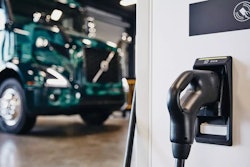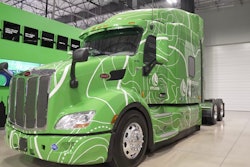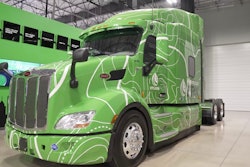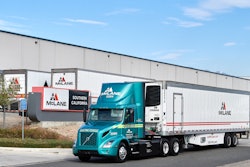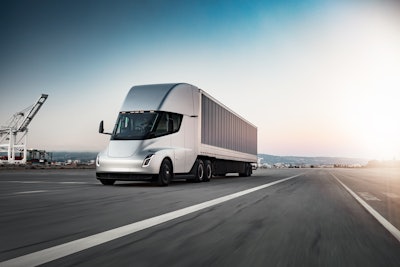
This year I’ve lost count of how many times I’ve heard the term “fake it ‘til you make it” applied to new technology efforts in interviews and in the news.
If you haven’t heard the term before, apparently it originated from California’s Silicon Valley business start-up culture where there is a tremendous need to win capital investment long before the company vision is achieved. While the need to win investment dollars occurs everywhere, the term originated there.
This business environment – one that stresses an overwhelming need to win over investors while in parallel developing a new product – is also not new. I recall living through the dot-com bubble and sitting through endless marketing pitches where any challenge was countered with the promise that it would be easily solved in the next revision of the software. I’m sure even Edison and Ford had a few moments where they had to press the vision to secure some funding before the product had fully materialized.
Sometimes the vision is never achieved before investors sour. Sometimes companies run afoul of regulations and laws. Sometimes the engineering miracles don’t happen as expected. Other times, the vision is achieved and home runs are made. The process of predicting which projects will ultimately succeed and which will fail is at its heart gambling. The last few years have demonstrated how little control companies have over their own fate.
So, we go to marketing events, truck shows, private showings, etc. The media get invited to ride-and-drives and special company demonstrations. Much is written about great new ideas, planned launch dates and especially how much customer market share they will capture. Over time, we mostly tend to forget the promises and just monitor visible progress toward the vision. No one really goes back to compare the promises to the realities – with perhaps one notable exception.
Elon Musk’s statements in 2017 at the reveal of the Tesla Semi truck promised production in 2019. That keeps surfacing in the media. We seem hyper focused on anything about Tesla and anything Musk says. A few years ago, I was involved in a national math competition for high schoolers. NACFE helped prepare the background for the competition and provided information for the teams. I was amazed reading the submissions by how much influence Elon Musk and Tesla had on the young competitors. It was like anything he said was immediately given credibility and no other sources of fact were needed. I virtually attended that 2017 Tesla Semi reveal and NACFE’s executive director, Mike Roeth, was there in person. We authored a short analysis of the vision, the claims and the promises. Now, almost five years after that 2017 reveal, the trucking industry still is riding on every comment from Tesla executives and Musk. In the meantime, traditional OEMs like Daimler, Volvo, Paccar, Navistar and new start-ups like Nikola have put trucks into production and have them running with fleets.
Visionaries are not new to trucking. My first exposure to an industry “truck show” was in the early 1980’s — the International Truck Show held in California. Many things have changed in trucking since then, but a constant at nearly every truck show is what’s called the “show truck” or “concept truck.” These tend to be show pieces for truck manufacturers asking “what if we did this?” The trucks are sometimes nearly ready to go into production. Other times they are never intended to go into production, rather are just test beds for soliciting feedback and sometimes, I think, just to scare the competition into reacting and spending their own research and development money.
These concept trucks need to show well, so almost no expense is spared to make sure they will impress viewers. Teams work long hours right up to the last minute, sometimes finishing work at the show itself. Sometimes you get to see under the hood, in the cab and in the sleeper. Other times you don’t even get to open a door or hood. When viewing is restricted, it often is because something didn’t get done to management’s satisfaction. I learned over the years that the right application of a motivated team and enough money can make miracles happen in the last weeks before an event.
The concept trucks that are on track to actually be produced always come with public statements estimating a production launch date. Depending on how mature the testing has been, those announcements can be precise like “May 1 this year,” or vaguer such as “next year.” Sometimes these dates are accurate, but other times they are more like guidelines. A lot can happen between when a show truck first gets presented to the public and when the truck gets into production.
Distinguishing between the hype and the promise is tough. In the end, the technology either works in the field or it doesn’t. The ones that don’t disappear quickly. Reality is a hard but effective proving ground for visions and promises.
Optimism always will be a part of promoting technology by those with a vested interest in the technologies. When optimism crosses the line into charlatanism, hopefully the regulators, media and public catch it through the legal system and the court of public opinion. But there can be a fine line separating the two and it can be very hard to spot.
I have been an invited lecturer at senior engineering project classes. One of my consistent messages is that engineering is inescapably tied to marketing. You have to sell the project, the team and yourself constantly to help bring the vision into reality. Making something out of nothing is not easy.
I am thrilled there are so many start-up vehicle and system manufacturers now entering the trucking space. I have always felt good competition makes you and your team better. I am impressed at how the traditional OEMs have pivoted to address the new technologies and compete with the start-ups. I’m impressed that some of the start-ups are starting to put production level trucks in customers’ hands.
The future is what we make of it. Earlier this year, I presented a graphic from CALSTART from last December talking about how many zero emission Class 2B-8 trucks there were in the U.S. There were 1,215.
But that is so yesterday. Nikola alone is producing 50 trucks a quarter. Daimler, Volvo, Paccar, Navistar and a raft of start-ups are starting to deliver real numbers. The American Transportation Research Institute recently published their annual Operational Cost of Trucking 2022 report and in it they found that 3.9% of the fleets they interviewed had battery electric trucks. Wow. If I can mis-quote Winston Churchill, "This is perhaps the end of the beginning for zero-emissions vehicles."




